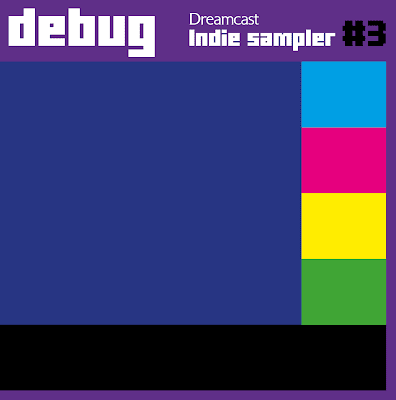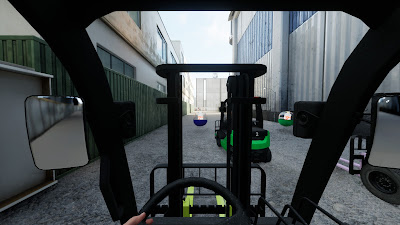Past works are lost when they stop conversing with the present. Honoring old games requires us to continue engaging with them, of course, but the onus is also on them to reciprocate. To enrich their legacy, revivals and follow-ups must do more than pander to us old fucks who were already there for them. They must also find relevance with new generations of players and creators who may be inspired to shepherd their ideas into the future. Or else let them die. Celebrating those experiences can mean reinterpreting and recontextualizing them, if not reinventing them altogether.
In this essay, I will—
And so it goes for Cosmic Smash, Sega Rosso’s modest game of intergalactic, block-breaking racquetball. The NAOMI title saw limited distribution in Japanese and European arcades in 2001, plus a stint on Japanese Dreamcasts. Following an initial run in obscurity, it has since rallied a cult following – that is, assuming the Junkyard community’s Top 200 rankings weren’t fraudulent.
 |
| At #64 overall, Cosmic Smash was voted the #5 ranked Japanese exclusive and the #1 game about swatting balls around a shipping container. |
For many fans – including the creative teams at RapidEyeMovers and Wolf & Wood – Cosmic Smash’s resonance endures. Unearthing the license from under the sofa cushions at Sega’s IP lawyers’ offices (I imagine), they have developed C-Smash VRS, an unlikely reimagining of Rosso’s space station sportsball.
I’ve long respected Cosmic Smash for its melding of Rez-ish vibes and Virtua Tennish feel, but I’ve always felt detached from its primary hook. In virtual reality, though? Immersing players in the kineticism of physically swinging paddles at balls at walls in space makes immediate sense. Titles like Sparc, Holoball, and Proton Pulse have also poked at the edges of this concept in VR, albeit with mixed success. At the very least, they’ve helped buoy cyber squash as an accredited genre.
Meanwhile, the recent wave of Sega-inspired remakes/sequels/homages has set ample precedent on the nostalgic front. Yet, in the rising sea of Sega-likes, it’s easy to float adrift. Many rehash the most superficial aspects of their inspirations but fundamentally misunderstand — or fail to coherently capture — the core of why folks love them in the first place. This keeps them from fully evoking or advancing those concepts, or replicating their magic in any meaningful way.
Refreshingly, C-Smash VRS is deliberate and confident in its homage, and it wastes little time laying a foundation of its own.
VRS shares Cosmic Smash’s premise in all its minimalist glory. It has you rally a ball against a wall of blocks/panels to clear them within a time limit. As you progress, the configurations grow more layered and complex, and glimpses of puzzle elements begin to emerge. Some panels will move in patterns. Unbreakable panels will obstruct portions of the field. Special panels will clear adjacent rows, freeze panels in motion, or extend your time limit. Over time, successful hits will recharge your Power Smash ability, which can clear stacks of panels in a single shot.
The racket work feels remarkably natural. Its nuanced tracking and physics afford a wide gamut of shots, shanks, and whiffs. If you’re experienced at real-life racket sports, a few of the principles you’ve learned – like squaring yourself for forehands and backhands, anticipating timing and trajectories, etc. – will certainly help you here. If you suck at such sports in real life, though, then the learning curve will be a bit steeper. Either way, it is innately intuitive and rewarding to learn.
For their part, the PSVR2’s Sense controllers never struggle to keep up. In the game and real life, I flail in parity. And whenever I fuck up, it’s just about always my fault. The technology – or VRS’s exceptional implementation of it – simply works. That I never have to think about it is probably the best compliment I could give.
There are drawbacks, however. VRS binds several actions to the other controller, with limited options for button mapping. A Force-pull gesture serves the ball towards you, crouching helps reach low-bouncing balls, and the analog stick moves you horizontally along the baseline. It would be great to be able to remap all of these actions as needed, especially to a single controller.
Interestingly, VRS also helps me appreciate aspects of Cosmic Smash I had taken for granted. In its shift to first-person, it loses the flair of its wireframe avatar and all the cool shit they could do: The leaping volleys. The wall jumps. The aerial flips. The unlimited trick shots. The stylish replays. The celebratory flexing. They’re necessary omissions, but I underestimated their collective contribution to the original’s vibrancy and charm. Realistically, C-Smash VRS is feasible because it eschews those verbs, and players prone to motion sickness will be thankful for their absence. In that sense, VRS helps celebrate Cosmic Smash by contrast of its own sacrifices.

As with the original game, VRS’s style is integral to its substance. It preserves its clean, minimalist aesthetics and adds new flourishes of its own. It depicts a similarly optimistic future where humankind has channeled its ambitions into interstellar sports courts. VRS then expands on its setting with livelier and less claustrophobic arenas. Windows have now been installed, unveiling orbiting planets, little space guys, and other nuggets of world(s)building.
In its scope, C-Smash VRS is laser-focused on the minimum viable product, for better or worse. It practically flaunts its simplicity in its pair of solo modes. Among them is Challenge, where you progress through dozens of stages under a strict, continuous time limit to clear as many as you can as quickly as you can (i.e. Cosmic Smash). Alternatively, Zen mode works the same except failing stages doesn’t end your run and you can replay them as desired to improve your times and rankings. If that motivates you, you’ll get substantially more out of VRS’ solo-play. If not, you may be done with it after a run or two.
















































